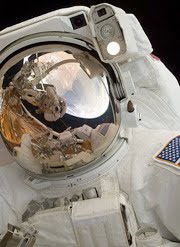
Thursday, February 17, 2011
A Milestone in the History of AI: Watson's victory in Jeopardy! and the supercomputers that preceded it

Monday, December 6, 2010
NASA Life Discovery: New Bacteria Makes DNA With Arsenic

Sunday, November 14, 2010
Tiny Dragon
Saturday, November 6, 2010
The Clearest View Yet Of A 1,000 Year Old Explosion

According to National Geographic:
This new picture of the Crab Nebula combines data from the Chandra X-ray Observatory, the Hubble Space Telescope, and the Spitzer Space Telescope . . . Infrared light caught by Spitzer and visible light seen by Hubble paint the nebula's expanding debris cloud in shades of purple and red. Meanwhile, Chandra's x-ray vision is helping astronomers understand the high-energy particles (seen in blue) coming from the dead star's core, known as a [sic] white dwarf.
Thursday, September 2, 2010
Friday, May 28, 2010
It’s In the Bag! Teenager Wins Science Fair, Solves Massive Environmental Problem

Burd’s strategy was simple: Since plastic does eventually degrade, it must be eaten by microorganisms. If those microorganisms, as well as the optimal conditions for their growth, could be identified, we could put them to work eating the plastic much faster than under normal conditions.
With this goal in mind, he ground plastic bags into a powder and concocted a solution of household chemicals, yeast and tap water to encourage microbe growth. Then he added the plastic powder and let the microbes work their magic for three months. Finally, he tested the resulting bacterial culture on plastic bags, exposing one plastic sample to dead bacteria as a control.
Sure enough, the plastic exposed to the live bacteria was 17 percent lighter than the control after six weeks. Once Burd examined the most effective strains of bacteria, he was able to isolate two types—Sphingomonas and Pseudomonas—as the plastic munchers. At 37 degrees and optimal bacterial concentration, the microbes had consumed 43 percent of a plastic sample within six weeks.
Next up, maybe it’s time to put him to work on this whole carbon emissions thing.
Leaf-like Sea Slug Can Photosynthesize!

A green sea slug found off North America’s east coast not only looks like a leaf, but can also make food out of sunlight, just like a plant.
via CBC News – Technology & Science – Leaf-like sea slug feeds on light.
Tuesday, April 20, 2010
Discoveries: Sea Microbes
Friday, March 26, 2010
Nanotechnology... Sponges and muscles.


Wednesday, October 14, 2009
The first known vegetarian spider






